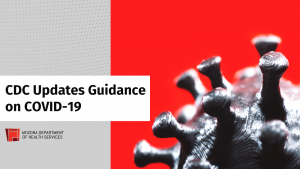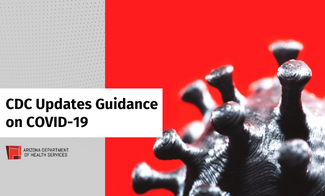 The Centers for Disease Control and Prevention (CDC) has updated its COVID-19 guidance to focus on reducing the risk of severe illness and, in doing so, minimizing strain on the health care system.
The Centers for Disease Control and Prevention (CDC) has updated its COVID-19 guidance to focus on reducing the risk of severe illness and, in doing so, minimizing strain on the health care system.
Perhaps the most notable change is eliminating the recommendation that someone isolate if they have been in close contact with someone who has COVID-19. The guidance does call for wearing a properly fitting mask for 10 days after exposure and getting tested at least five days after. In addition, the updated guidance doesn’t distinguish between vaccinated and unvaccinated people, though breakthrough cases in those who are up-to-date on COVID-19 vaccination typically are far milder.
The updated guidance asks you to keep four priority areas in mind to protect yourself and your community from COVID-19:
1. Understand Your Risk
Monitoring CDC COVID-19 Community Levels and associated recommendations will help you to understand the COVID-19 impact in your area and take precautions based on your risk for severe illness and that of those you will be around. The CDC maintains a list of conditions that increase your risk of severe illness from COVID-19.
2. Protect Yourself and Others
- Vaccination: Being up-to-date on COVID-19 vaccination remains the best way to protect against severe outcomes. In June, Arizonans who were fully vaccinated and boosted were 9.8 times less likely to be hospitalized and 12 times less likely to die than those who weren’t vaccinated. Yet less than half of all fully vaccinated adults and a third of those 65 and older have yet to receive a booster dose. You lower your risk of severe illness, hospitalization, long COVID, and worse by taking full advantage of vaccination, so please find a provider at azhealth.gov/FindVaccine and get boosted.
- If You Are at Increased Risk: According to the CDC, taking the prescription drug Evusheld before COVID-19 infection can help protect people who are moderately or severely immunocompromised from getting severely ill. If you are at higher risk for severe illness, find out now where you can get treatment or prevention medication.
- Mitigate: Improving ventilation in homes and in public spaces can reduce the chances that virus particles will spread. If masks are recommended in your area, wear one in public indoor spaces and make sure it fits well and is worn over the nose and mouth. Learn more at azhealth.gov/Masks.
3. Take Action If You Are Exposed
- Protect Others: Take precautions and watch for symptoms. The updated guidance calls for wearing a mask indoors in public for 10 days and testing five days or more after your last exposure to someone who has COVID-19.
- Test: Get tested at least five days after exposure to someone who has COVID-19. Options are point-of-care sites and at-home testing.
4. Take Action If You Get COVID-19
- Isolation: Isolate promptly if you have symptoms. Remain in isolation for at least five days and wear a high-quality mask such as an N95 or KN95 around others during that time. Isolation can end when you are without fever for at least 24 hours without the use of medication and all other symptoms have improved. Continue masking around others through day 10.
- A Note on Masking: You can use an antigen test to determine whether it is appropriate to discontinue wearing a mask before day 10. Wait until you’ve been without fever without the aid of medication for at least 24 hours and have seen improvement in other symptoms. Note that two antigen tests at least 48 hours apart will provide more reliable information.
—
I hope this new way of looking at these public health recommendations creates a simple and sustainable way forward as COVID-19 remains active in Arizona.










